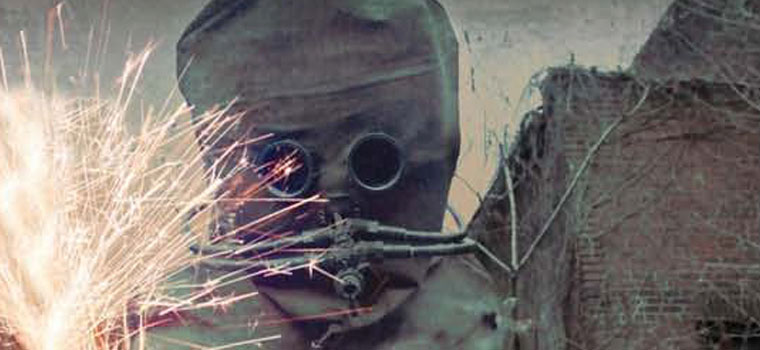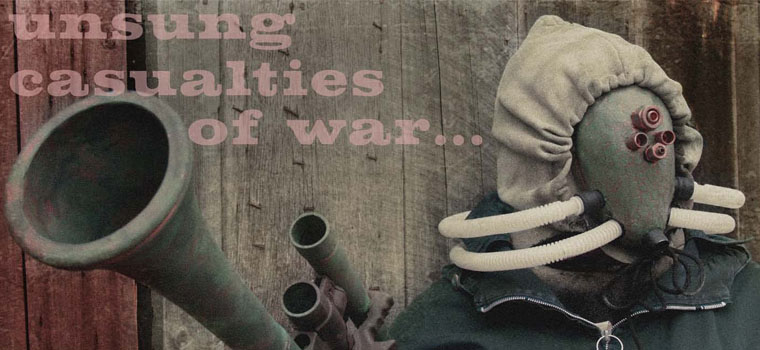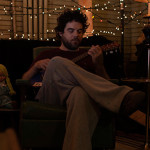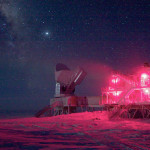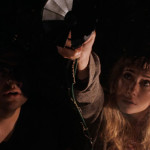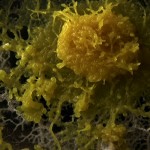ALCHEMIST OF THE APOCALYPSE
ALCHEMIST OF THE APOCALYPSE: Pat Tremblay’s HELLACIOUS ACRES
Kier-La Janisse
Montrealer Pat Tremblay’s aptly-titled Hellacious Acres may not be named after the Barbra Streisand song, but it does share a certain admonitory sentiment: “It’s free to get in, but you pay to get out…” When Tremblay’s home-grown sci-fi film kicks off, we are in the middle of a rural post-apocalyptic wasteland, where the few unlucky stragglers of humanity bound in makeshift survival gear will either starve to death or be zapped by the large jellyfish-like aliens that roam in packs throughout the country. One such survivor is John Glass, a soldier who had been cryogenically frozen as global war broke out and humanity was on the verge canadian needs a prescription in us of extinction, prompting governments and scientists to essentially speed up the process by taking the opportunity to experiment with every untested gadget, weapon or disease they could before being obliterated. As a result, Glass has woken up in an indeterminate future rather ill-prepared for the conditions that lay ahead – both physically and emotionally. Saddled with untested gear that seems more likely to kill him than to protect or sustain him, he wanders though dried-out farmland in an levitra show pill existential daze, looking for any clue as to why he is here or what he is expected to do before his body inevitably gives out.
Pat Tremblay – producer, writer, director, DOP, editor, visual FX, costume designer, actor and co-composer – spoke to Spectacular Optical about the long journey to completing the film and his tongue in cheek approach to his protagonist’s rather desperate situation.
—————————–
You wear almost every hat on this film – you have at least 9 of the major credits! Is this because you wanted to be in control of everything or was it more of a financial consideration since it was a relatively low budget film? How long has the film taken canadian online pharmacy no prescription needed to complete?
As much as control is something a director needs to have to various extents, the situation for this film was definitely a budget issue. When you decide to self-finance a feature, every penny counts. The film took 3 years to do. But the main reason is that I wanted to shoot those exteriors strictly in the fall and spring to get the ‘lifeless’ look the film has. My windows of time were rather short and to arrange everything around the availability of my small but extremely valuable crew (who all gave their time for free), I secure places to buy levitra in canada visa winded up having just a few days left in those crucial periods. A fight with time, nature and weather…
The rural location is an interesting contrast, like this dead history asserting itself against the so-called advancements of the future. Where was it filmed, and what made you decide to go for a rural setting?
Well there are a few reasons: Since the aliens struck in the most populated areas in order to gain victory, this led the military to eventually fleeing and trying to reorganize themselves in areas that would seem either unlikely or simply remote enough from the still ongoing killing action.
Plus I’m a barn addict and I love watching fields, especially in the autumn time, when I’m riding in a car. I’ll endlessly watch outside and contemplate the combination of those seasonal colors, especially under cloudy days. So it has always been an intention of mine of shooting ‘something’ in those settings. And this was the perfect excuse story-wise for the setting, since it would avoid me having to create tons of fake devastated backdrops… As much as I love spfx, they are time consuming!
All the scenes were filmed in many areas around Quebec and Ontario. Like St-Mathias, Plantagenet, Ste-Ambroise, Lacolle, Ste-Marthe, Magog and others.
Everything he could do to improve his situation has a likely side effect that could kill him – it really seems like a hopeless situation. Were the scientists of the past so desperate that they would send someone into the future so ill-prepared?
You are definitely on the right track. All those answers are hidden in the long and painful narration moments… If the spectator doesn’t tune out, which is also meant to happen, there are many hints of how all these things came into place. The subplot is not necessary to understand or ‘enjoy’ the film, but you might catch other interesting bits upon repeated viewings. It was really designed this way. A bit suicidal some could say, but I never planned to make this an easy-to-swallow pill!
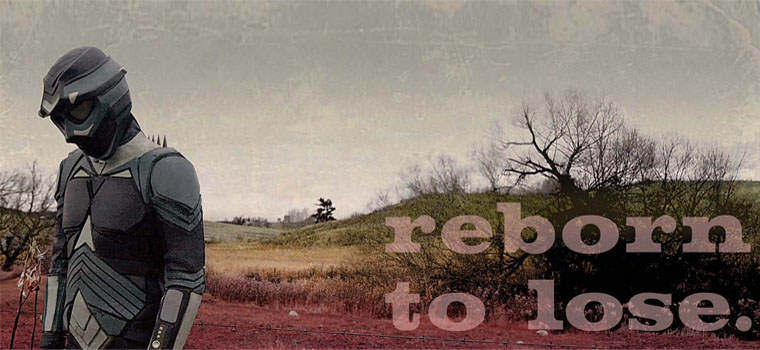
Did you find it a challenge to have a protagonist whose face the audience never sees? (although from the end credits it seems like it allowed for the role to be played by several different people?)
I thought about that being a problem, but then convinced myself that people could identify with the anonymity of the character, that it could be anybody under that helmet, even them. As long as the dialogue was done properly and the movement felt right, it would work out in my mind. The main character was played by myself, and just about a half-dozen shots that didn’t involve specific action or dialogue were done by my colleague Jean-Francois Deshaies (who also helped a lot on the film as well as composing the music with me). But it’s still a hybrid way of working because when there’s dialogue, I’m reacting to pre-taped recordings I did with real actors (Navin Pratap & Jamie Abrams).
Can you tell me a bit about how you did the visual effects – the alien creatures etc? What exactly did CJ Goldman do on the film?
All the visual effects were done in After Effects. They are the result of much experimentation. I really enjoy doing color manipulations to create uncommon moods. The alien creatures are a blend of AE and some real organic living things…! CJ helped made a mould of my body so I could build the suit on it so it could fit me like a glove. It did fit me, but was a major pain in the ass to wear and work out with, but that was my fault in the end! He also gave me time at his studio, made the moulds for the helmet and had precious advice about everything regarding those suits. Without him, I would have made awful mistakes and spent money on things that were destined to fail. His generosity and attitude is truly, truly great.
Tonally the film is a unique blend of the ‘last man on earth’ story and a comedy of errors – what precedents were you mining for inspiration? I’m guessing the inspirations go beyond science fiction films.
Way too often I see all the possibilities that could happen in parallel universes for any number of things, even for ridiculous stuff… And I guess, to calm that mindstorm of mine, I just eventually focus on the funny or ironic versions of potential events to at least entertain myself as the phenomenon happens. I love clever sci-fi, but here, it serves the purpose of being able to tell a story while not needing more than a few minimalist settings. The movie is a comedy first and foremost.
Did you see the film LOVE that played at the festival? Because thematically the films have some similarities – especially in that they both have an isolated, abandoned protagonist who hangs onto the recorded diary of a predecessor to keep him company. I like how in your film John Glass was listening to the record of his dead fellow soldier as he was falling asleep, like listening to the radio. What do you think the role of other people is in keeping us sane?
Damn! I wanted to see that movie, and now you’re telling me this?! I hate it when that happens, I had no idea at all… Now I must see it! As for the role of other people keeping us sane: I think it’s because humans are social animals to begin with, and even when some say they prefer being alone, I believe they are lying deep down. We need those connections. And in John’s case, it’s also a device to learn more about what to do and NOT do…
The film has a “life sucks and then you die” kind of message. But obviously you can’t look at life that way and still be driven to make films. Or can you?
On the surface, the movie does seem to propose that idea, and I’m sure you’re not the only one who will see it that way since it’s also meant to provoke that initial reaction. But if you change your perspective and focus on another element, which I will not mention, you will find that this movie is actually wrapped in positivity and hope! I’m just taking long-ass detours and looking at it with a different pair of eyes while doing it… Twisting things is fun.
———————
HELLACIOUS ACRES: THE CASE OF JOHN GLASS has its North American Premiere on July 24 at 7:10pm and screens again on Aug 2 at 12:45pm in the Salle JA DeSeve. More info on the film page HERE.

 July 24, 2011
July 24, 2011  No Comments
No Comments
